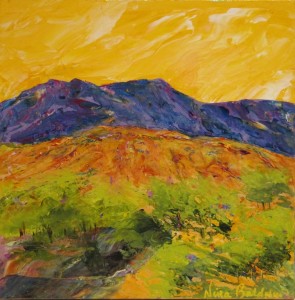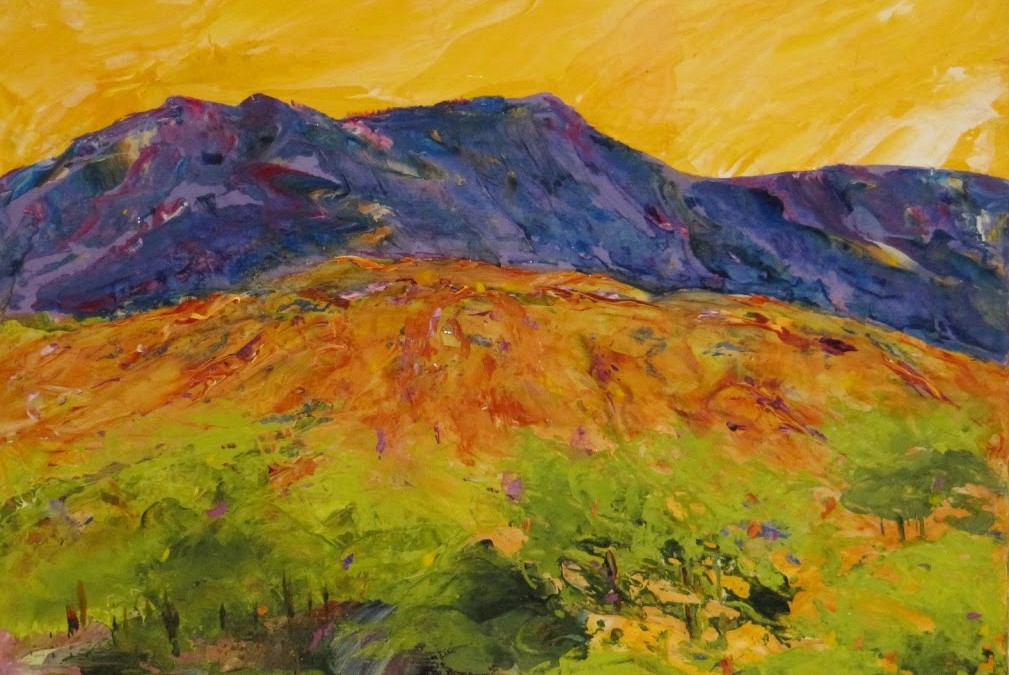 |
| MANZANO MOUNTAINS by Nina Baldwin 10″ x 10″ on canvas – private collection |
- short, thick strokes of paint are used to quickly capture the essence of the subject rather than its details. the paint is often applied impasto.
- colors are applied side-by-side with as little mixing as possible, creating a vibrant surface. The optical mixing of colors occurs in the eye of the viewer.
- grays and dark tones are produced by mixing complimentary colors. In pure Impressionism the use of black paint is avoided.
- wet paint is placed into wet paint without waiting for successive applications to dry, producing softer edges and an intermingling of color.
- painting in the evening to get effets de soir – the shadowy effects of the light in the evening or twilight.
- Impressionist paintings do not exploit the transparency of thin paint films (glazes) which earlier artists built up carefully to produce effects. The surface of an Impressionist painting is typically opaque.
- The play of natural light is emphasized. Close attention is paid to the reflection of colors from object to object.
- In paintings made en plein air (outdoors), shadows are boldly painted with the blue of the sky as it is reflected onto surfaces, giving a sense of freshness and openness that was not captured in painting previously. (Blue shadows on snow inspired the technique.)
The above is borrowed from Wikipedia…it is concise…thanks Wikipedia!



interesting blog. It would be great if you can provide more details about it. Thanks you
wassily kandinsky paintings
thanks suresh for reading the blog and letting me know you enjoyed it! it has been fun to write the posts to share with others…and your comment encourages me! thanks!!!